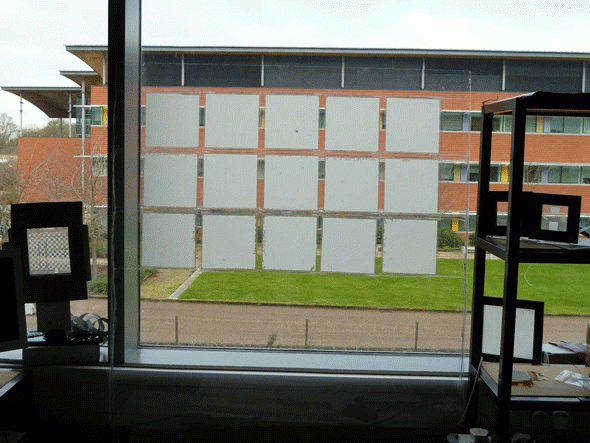
Fast Switching SmA LC Smart Window
A method to enable smectic A (SmA) liquid crystal (LC) devices to switch uniformly and hence fast from the clear state to a scattered state is presented. It will allow the reduction of the switching time for a SmA LC panel of 1 × 1 m2 changing from a clear state to a fully scattered state by more than three orders to a few tens of milliseconds. Experimental results presented here reveal that SmA LC scattering initiates from the nucleated LC defects at the field gradient of the applied electric field usually along the edges of the panel electrode and grows laterally to spread over a panel, which takes a long time if the panel size is large. By patterning the electrodes in use, it is possible to create a large number of field gradient sites near the electrode discontinuities, resulting in a uniform and fast switching over the whole panel and the higher the pattern density the shorter the panel switching time. For the SmA LC panels used here, the ITO transparent electrodes are patterned by laser ablation and photolithography. It is shown that the defect nucleation time is much shorter than the growth time of the scattered region, hence it is possible to use the density of the field gradient sites to control the uniformity and switching time of a panel. Furthermore, the patterned SmA panels have a lower switching voltage than that of the non-patterned ones in general.
The work by Prof Daping Chu and Dr Kun Li has resulted in a patent application, a spinout company (Flexypix Ltd.) and a cover story paper in the journal Liquid Crystals in 2016, which was reported in Liquid Crystal Today: Industry & Applications News. The published paper was considered an important advance in the development of the potential device applications and shortlisted for the 2016 Luckhurst-Samulski Prize by the editors at the journal of Liquid Crystal.
You can have the full access here: https://doi.org/10.1080/02678292.2016.1142012

